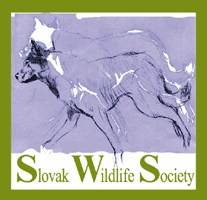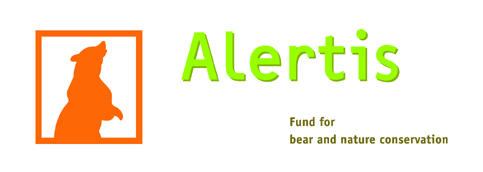

Project diary 2010

December
The "bear year" in Slovakia finished with a shocking example of how not to manage bears. A local animal shelter worker tried to immobilise an adult bear (found later to be a pregnant female) using a catch pole designed for a dog. The animal was surprisingly calm considering all the people and dogs nearby but was eventually provoked into biting him and was then shot dead by police officers firing towards the car in which the man had taken shelter. This case illustrates the need to have trained personnel in a dedicated Bear Emergency Team, clear procedures and protocols for interventions in critical situations and also a comprehensive management strategy to prevent problems reaching such extremes. This should include appropriate securing of refuse and other attractants to avoid incidents of bears seeking food in built up areas and a prompt, effective approach to dealing with any bears venturing into such areas.

Images: idnes.cz
November
The first major snowfall in Liptovská Porúbka, on the edge of the Low Tatras National Park at 650m, was on 24 November, but in the mountains winter is already much further advanced. In the Western Tatras, for example, two bears studied using telemetry equipment began denning on 18 October (an adult female) and mid November (adult male). The female was trapped and fitted with a collar by Tatras National Park staff on 2 April and from then until entering her den at 1630m she used a total area of around 123 km2, including moving as much as 22km/24h between high mountain berry-rich meadows at up to 1958m, hunters' feeding sites and fields in the valley below down to 773m. This home range - in one year only - is already larger than the size of territories previously "guestimated" for bears in Slovakia (10-30 km2 are the "traditional" figures most often repeated) and is likely to be dwarfed by the big male's range, although we will have to wait a little longer for that information as he was collared on 16 October, just a few weeks before he began hibernating.October
Bears, like many other predatory species, tend to evoke strong opinions and divide people holding opposing viewpoints. Slovakia is no exception. For example, the struggle between those for and against hunting has dominated recent discussions. Media coverage usually focuses on the negative aspects of bears, often over-shadowing efforts to find effective ways to minimise the danger and damage they sometimes cause. To enable constructive progress, barriers of distrust need to be broken down so that positive dialogue can take place and lasting agreement reached. Achieving this will probably require a neutral facilitator, skilled in mediating negotiations. In mid October we hosted a week-long visit by Prof. Alistair Bath of Memorial University, Newfoundland, and the Large Carnivore Initiative for Europe. Alistair has extensive experience in this field. His approach is based on building trust between groups and motivating them to work together to find solutions. He was instrumental in the successful completion of management plans for bears in Bulgaria and wolves in Croatia, so is the ideal candidate for the job in Slovakia. The first step in the process was to meet with various interest groups (hunters, foresters, landowners, conservationists, farmers, researchers) and to listen to their concerns. It was clear from this that no one was satisfied with the present situation in Slovakia but, encouragingly, there was a great willingness to talk and to try to find a way forward.


Photographs: Jaroslav Slašťan
September
On Thursday 23 September Gregg Losinski of the Idaho Department of Fish & Game gave a presentation at the Horolezecká chata in Horný Smokovec on "Bringing back the grizzlies of the Yellowstone Ecosystem and learning to live with them". Gregg is a Regional Conservation Educator and works with grizzly bears in the Yellowstone area where, as in the Tatras, bears have been increasing in numbers and spreading beyond national park boundaries. Gregg has family roots in Štrba and was visiting for a holiday, but wanted to take the opportunity to present some of his work. As well as describing the results of research work on grizzly bears, which are a sub-species of brown bears (the same species of bears that we have in Slovakia), Gregg explained some of the management strategies used to minimise bear-human conflicts, and in particular the use of bear-proof bins, pepper spray, safe camping and the importance of educating the public about bears. These are all concepts that we are working to introduce in Slovakia. On behalf of our fellow organisers and all those who attended, thank you to Gregg for giving up his spare time and providing us with a fun and insightful evening.





August
With substantial interest this summer in our personal guiding service we have been spending many pleasant days and nights out in the Tatras. We've also had plenty of sightings of bears: some distant views and some closer encounters. On 5 August we saw a bear feeding in an open area high above the valley bottom in Tichá and then, a few moments later, watched as a female with her two young cubs wandered over another meadow on the other side of the valley before crossing the ridge, momentarily standing beautifully silhouetted on the horizon.






July
We've just had a fantastic experience. Although Tony and Louise were most interested in bears, I don't think they minded seeing a lynx! We had been up since 5am but by 7 had only seen a roe deer buck. He was very nice and came close to us as we sat quietly in the grass, still I thought we could do better so suggested we walk back towards a colony of marmots, which started going berserk as we approached. I've never heard marmots get that worked up about people and didn't think we could be the cause of so much consternation. Sure enough, there was a lynx walking sedately through the middle of the colony. It was the best sighting of one I've ever had: in good light, out in the open about 300-400 metres away from us. We watched it for almost half an hour, during which time it made several attempts to catch marmots, who were having none of it, and eventually disappeared into some dwarf pine (Pinus mugo). And all that before we'd even had breakfast!










June
We ran our second Reintroductions Study Tour for those interested in exploring some of the issues that would face any potential reintroduction of large predators such as lynx or wolves to the UK. Participants had the chance not only to visit carnivore habitats but also to talk to local sheep farmers and to see some of the measures put in place to protect livestock, including electric fencing and a guarding dog provided by the Slovak Wildlife Society. Despite the continuing wet and windy weather, it was a fun and useful few days, rounded off with a sumptuous meal at the Grand Castle in Liptovský Hrádok. Thank you to Richard Morley for organising the UK side and also to Ivan Spilý for his excellent driving. All funds left over from the trip will go towards our ongoing work, both in the field and with the local community. More ...


Photographs: Maggie Keegan




May
After a successful first visit in 2009, we were happy to welcome back Wilfried and Rosemarie Rieder, who brought an enthusiastic group from HALM önj biotope protection group, Salzburg. We had some very wet weather but, just as last year, we had a good view of a bear; in fact we even managed to fulfil Willy's condition that in return for re-arranging the dates we would see two bears. I must admit it happened at a moment when I thought our chances for the day had gone, as we came to the end of a small path emerging onto a forest road with sounds of chainsaws not far away. As I turned to look along the track, just 20 metres away stood a mother bear and cub. After a few seconds' hesitation they ran away, but both bears stopped to glance back, and group members had the chance to take some nice photographs. For Margot, in particular, her first (and second!) sighting of a bear was a very emotional moment.


Photographs: Alex Maringer


Photographs: Nacres - Biodiversity Conservation and Research
April
It saddened us to hear of a forest worker badly injured by a bear in the Tatra Mountains on 27 April. From the little information contained in the brief notification we received from the Environment Ministry, it is not possible to judge why the attack took place, but the letter says that the bear had been seen regularly near the village of Tatranská Javorina for the preceding 10 days. We have received three more letters from the Ministry dealing with other applications to shoot bears. In each case, it is mentioned that the bear had been seen repeatedly in gardens or near buildings. There are several reasons why this might happen. They could be young animals, perhaps in their first spring without their mother, stumbling on what seem to be easy places to get food. There are also several proven techniques to deal with such situations. If done quickly enough, young bears can often be dissuaded with rubber bullets, bear scare darts, Laika dogs and pepper spray. These are standard interventions in some parts of the world but have been largely overlooked in Slovakia. We have written to Dr. Ambróš at the Ministry to inform him of the possibilities and to offer assistance.




March
Following the huge success of "Meeting the Bear", which was seen by around 20,000 people at 50 venues in 2005-2009, we have prepared a new exhibition about Europe's largest land-based carnivore. "BEARS AND US" presents informative facts about bears in an entertaining format. The wealth of photographs is supplemented with a Powerpoint presentation, educational film and plaster casts of bear footprints. A series of attractive banners contain information on what bears eat, why they hibernate and what threats they face. Like its predecessor, an important aim of this exhibition is to explain how problems between bears and people can be reduced, by protecting beehives and crops and learning how to avoid the riskiest situations as well as what to do if you meet a bear. More ...




Photographs: Robin Rigg / Fauna & Flora International
February
It was a relief to get some more snow just in time for our tracking census in Liptov. Obtaining reliable estimates of animal populations is vital for their effective conservation and management. The typically low population densities, large home ranges and cryptic behaviour of large carnivores such as wolves and lynx make them particularly difficult to observe directly and estimates of their numbers vary widely. Whereas official game statistics list more than 1,500 grey wolves in spring in Slovakia, some environmentalists claim there to be less than 150 individuals, a huge difference. Who is right? Maybe neither of them. The main aim of our project is therefore to develop a reliable, standardised methodology for assessing numbers of carnivores.


January
Although there were reports of bears emerging during a strangely warm and wet January, they seemed to return to their dens as temperatures dropped close to -20°C in the last week of the month and fresh snowfalls arrived. Prior to that we ran the latest of our weekend tracking events, this time focussed on wolves and lynx, and also spent a few days at the University of Veterinary Medicine in Košice analysing scats (faeces) we found in 2009. We have now amassed results from more than 850 bear scats collected since 2001, representing a unique database within Slovakia.




